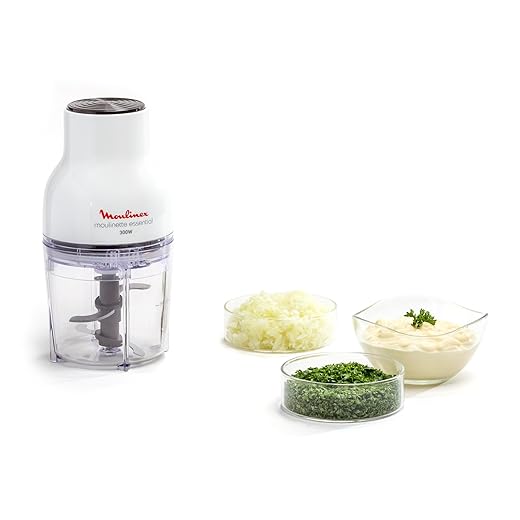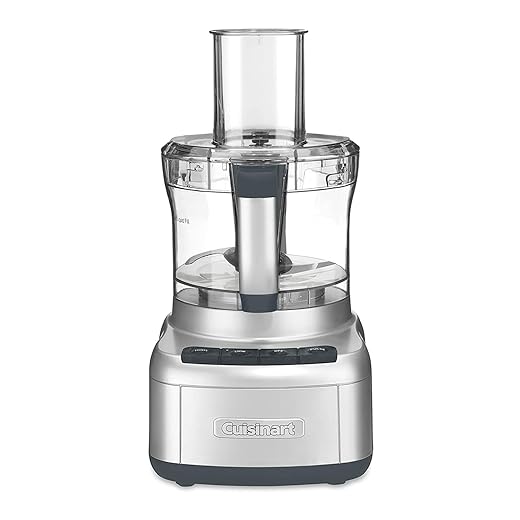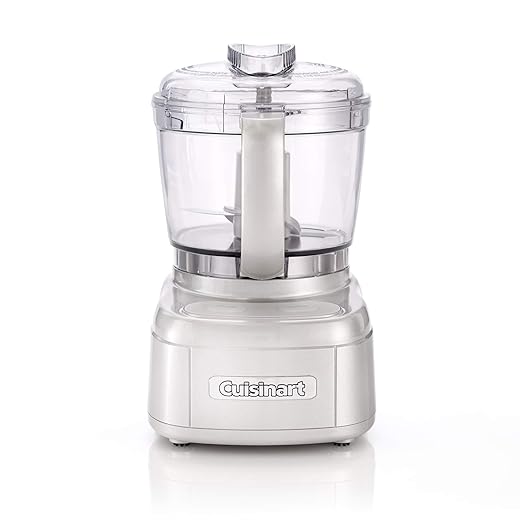In this step-by-step guide, you will learn how to efficiently shred cheese and vegetables using a food processor. By following the simple instructions provided, you can streamline your meal preparation process and save time in the kitchen. With the help of a food processor, you can achieve consistent and uniform shredding results, making it easier to incorporate these ingredients into your favorite dishes. Say goodbye to tedious hand-grating and hello to a more efficient way of preparing ingredients!



Check Food Processor
- Clean the food processor thoroughly: Wash the blades, bowl, and lid with warm soapy water and dry them completely before use.
- Check for any damages: Inspect the blades and any other components for any signs of wear or damage that could affect their performance.
- Test the food processor: Run a quick test with a small amount of food to ensure that the processor is functioning properly before you start shredding in larger batches.



Prepare Ingredients
- Wash and cut the vegetables and cheese into sizes that fit through the feeder tube of your food processor.
- Ensure the pieces are small enough to be processed smoothly.
- This will help you achieve consistent results in your recipes.
Assemble Food Processor
- Attach the shredding blade: Insert the shredding blade into the food processor’s designated slot, making sure it locks securely in place. For example, in some models, you might need to twist the blade until it clicks into position.
- Follow manufacturer’s instructions: Refer to the user manual for specific guidelines on how to attach the shredding blade correctly. Each food processor model may have slightly different instructions, so it’s crucial to follow the manufacturer’s recommendations precisely.
- Test the attachment: Before use, give the shredding blade a gentle tug to ensure it is firmly attached. This step helps prevent any accidents during operation and ensures that the blade will work effectively when processing food.
Turn on Processor
Plug in the food processor. Turn the food processor on and set it to the appropriate speed setting for shredding. Ensure the food is placed securely in the processor before starting it. Process the ingredients until they reach the desired consistency.
Feed Ingredients
Feed the vegetables and cheese through the feeder tube while the food processor is running. Ensure a steady and consistent pace while adding the ingredients to prevent clogging and ensure even processing. Monitor the feeding process closely to maintain a smooth operation and achieve the desired texture.
Empty Processor
Once all ingredients are shredded, switch off the food processor. Remove the shredded cheese and vegetables from the processor. Ensure all parts are safely detached and clean the processor before storing it.
Check Consistency
- Shred the cheese and vegetables to your preferred consistency.
- If the texture is not right, process them again for a smoother result.
- Pay attention to detail and adjust until you achieve the desired shred size.
- Keep refining until the cheese and vegetables are perfectly shredded.
Store Shredded Ingredients
- Transfer the shredded cheese and vegetables into airtight containers or resealable bags.
- Ensure the containers are tightly sealed to prevent air exposure.
- Label the containers with the date of storage for easy tracking.
- Place the containers in the refrigerator to keep the shredded ingredients fresh and ready for use.
Clean Food Processor
- Clean the food processor thoroughly after use, following the manufacturer’s cleaning instructions.
- Disassemble the food processor carefully and rinse each part under running water.
- Use a mild dish soap and a soft sponge to clean all the components, ensuring no food residue is left behind.
- Dry each part thoroughly before reassembling the food processor for future use.
Enjoy Your Shredded Ingredients
- Incorporate the shredded cheese into your pasta dishes, salads, or sandwiches for a burst of flavor and creaminess.
- Sprinkle the shredded vegetables over your soups, stir-fries, or omelets to add a pop of color and nutrients to your meals.
- Experiment with different combinations of shredded ingredients in your favorite recipes to elevate the taste and texture of your dishes.
Effortless Food Prep Mastery
In conclusion, using a food processor to shred cheese and vegetables is a game-changer for your meal prep routine. By following the simple steps outlined in this post, you can save time and effort in the kitchen while still enjoying delicious homemade dishes. Embrace the convenience and efficiency of food processor shredding, and elevate your cooking experience to a whole new level. Happy shredding!
Essential Equipment List

Efficient Food Processing Tips
Operating the Food Processor
- Begin by familiarizing yourself with the different components of the food processor, such as the bowl, lid, and blades
- Before using the food processor, ensure that all parts are properly assembled and securely locked into place
- Start by adding your ingredients into the bowl of the food processor, making sure not to overfill it to avoid spillage
- Close the lid tightly before turning on the food processor, and use the pulse function to control the consistency of your food
- After processing your ingredients, make sure to unplug the food processor and carefully remove the blades for cleaning
Answers to Common Food Processor Questions
A food processor is a kitchen appliance used for chopping, slicing, shredding, and pureeing food. It typically comes with various blades and attachments to perform different tasks efficiently.
In comparison, a blender is primarily used for mixing, blending, and pureeing ingredients to create smoothies, soups, sauces, and beverages. Blenders are designed with a tall, narrow container and a blade at the bottom to blend ingredients smoothly.
In summary, the main difference between a food processor and a blender lies in their functionalities: a food processor is more versatile for tasks like chopping and shredding, while a blender is better suited for mixing and blending liquids and soft ingredients.
Certainly! Some creative recipes that can be made using a food processor include homemade hummus, pesto sauce, cauliflower rice, energy balls, nut butter, and even homemade veggie burgers. Let your creativity soar and experiment with different ingredients to discover new and delicious recipes using your food processor! Happy cooking!
A food processor can be used to prepare a wide range of foods, including chopping vegetables, grinding nuts, making pesto or hummus, shredding cheese, mixing dough, and even making homemade nut butter. The versatility of a food processor makes it a valuable tool in the kitchen for various cooking and baking needs.
To clean and maintain a food processor for optimal performance, follow these steps:
- Unplug the food processor and disassemble all removable parts.
- Wash the parts in warm, soapy water, using a sponge or brush to remove any food residue.
- Rinse thoroughly with clean water and dry completely before reassembling.
- Wipe down the base of the food processor with a damp cloth to remove any spills or splatters.
- Regularly check and clean the blades and discs, making sure there is no buildup of food particles.
- Avoid submerging the base of the food processor in water; instead, use a damp cloth to clean it.
By following these cleaning and maintenance tips, you can ensure that your food processor operates at its best and remains in good condition for longer.
When using a food processor, it’s important to follow safety precautions to prevent accidents. Some key safety tips include making sure the food processor is unplugged before assembling or disassembling, never reaching into the processor while it’s running, and using the food pusher to feed ingredients into the processor to avoid contact with the blades. Additionally, always ensure the lid is securely in place before operating the food processor and never overfill the machine beyond its capacity. Practicing these safety measures will help you use your food processor safely and efficiently.
Yes, there are different sizes of food processors available, ranging from mini food processors to large capacity ones. To choose the right one for your needs, consider the following factors:
- Capacity: Determine how much food you typically prepare at once to select the appropriate size. Mini food processors are ideal for small quantities, while larger ones are better for bigger batches.
- Functions: Consider the functions you need, such as chopping, slicing, shredding, or even dough mixing. Choose a food processor that offers the functions you require.
- Power: Higher wattage typically means better performance for tougher tasks like kneading dough or chopping hard vegetables.
- Storage: If you have limited storage space, opt for a compact food processor that can be easily stored when not in use.
By considering these factors, you can choose a food processor that suits your needs and helps you in the kitchen more effectively.
Yes, a food processor can definitely be used for chopping vegetables and fruits. Food processors come with different attachments and blades that can be used for chopping, slicing, and dicing a variety of ingredients, including vegetables and fruits. Just make sure to choose the appropriate blade for the desired chopping size and use the pulse function to control the consistency of the chop. Enjoy preparing your delicious and nutritious meals with your food processor!


Leave a Reply
You must be logged in to post a comment.